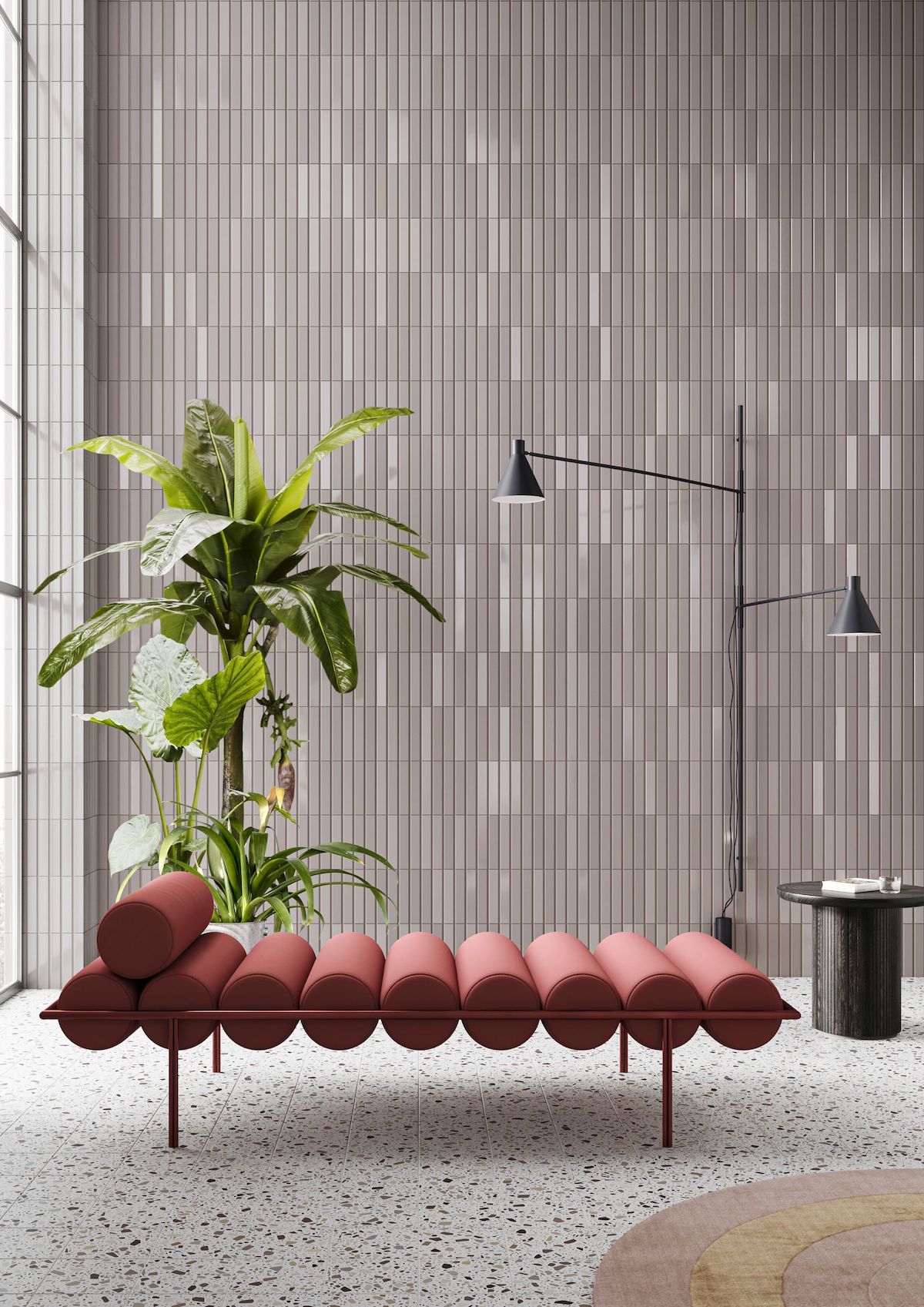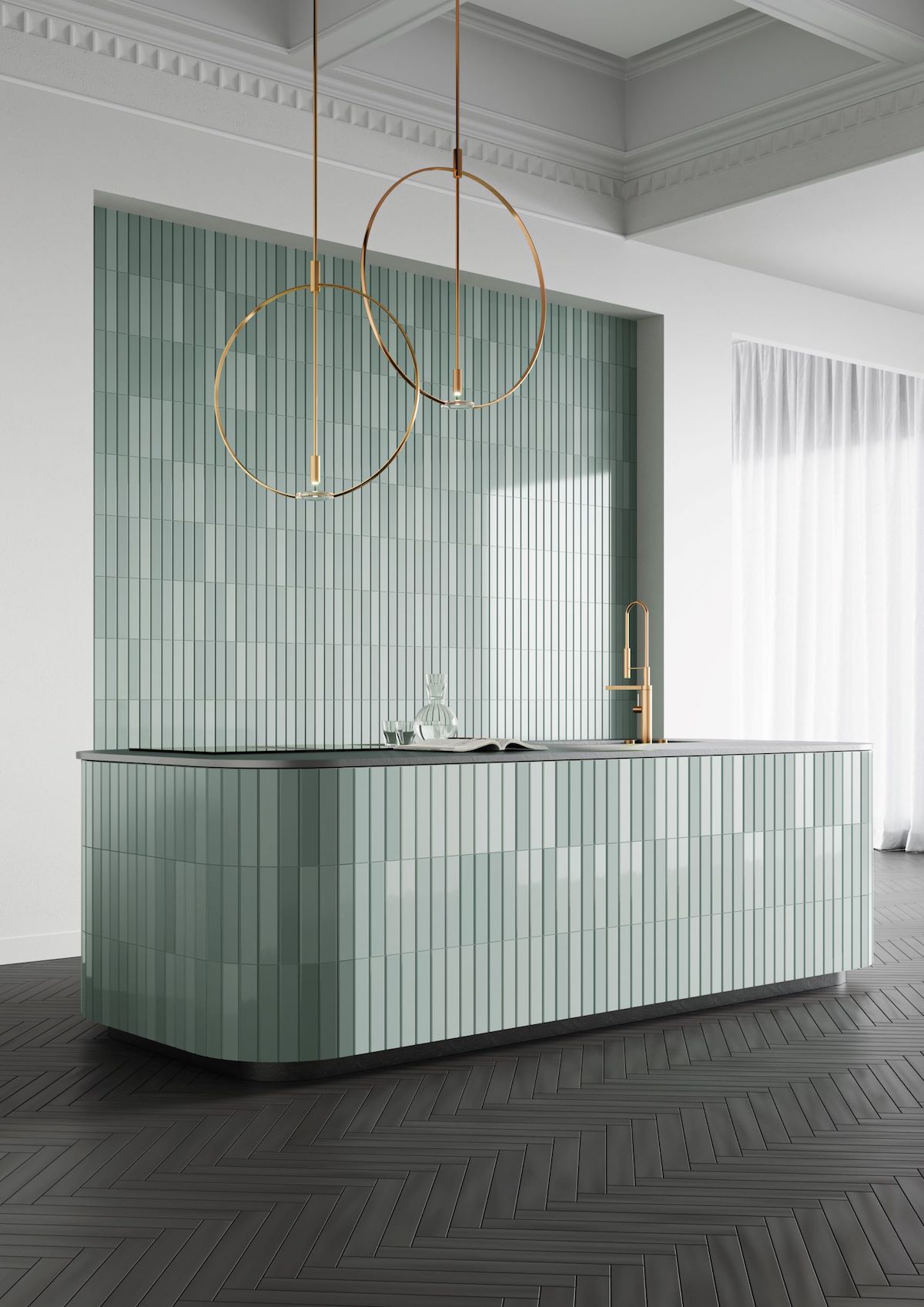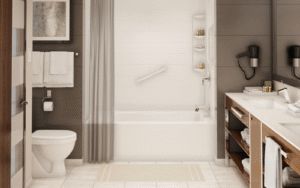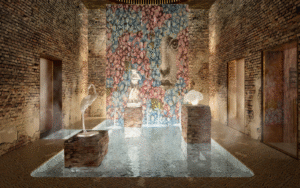Leading tile supplier CTD Architectural Tiles’ sales director – architectural, Andrew Sadler, discusses the three key considerations for choosing the right tile to complement hotel lighting…
The use of tiles in interior design for hotels has long been a popular choice for floors and walls alike. As well as providing a relatively easy-to-clean surface, design possibilities are almost endless thanks to the huge variety of tiles now available – with a variety of choice for any style, requirement and budget.
But one thing that can be easily overlooked when it comes to choosing the right tile for a hotel interior project is the impact of lighting beyond its potential to alter the perceived colour of tiles. Lighting can vary not only from hotel to hotel but also from room to room within a hotel, so it’s important to approach each project from a bespoke perspective, and to utilise your tile supplier’s knowledge of each product range.
As a starting point, we recommend considering shapes and textures, materials and even inclusivity alongside colour when it comes to choosing tiles that will perfectly complement the existing lighting.
Considering shape and texture
Not only will different lighting conditions affect the perceived colour of tiling, but it can also impact the perceived texture. This particularly applies to timber-effect and stone-effect tiles, where softer lighting is more likely to make the tiles appear flat while harsher lighting can highlight the texture of these tiles – so it’s important to choose the right tile texture for different areas of the hotel, depending on the lighting.
While the appearance of a tile’s texture can be impacted by lighting, tile texture and shapes can also be used with lighting to create an attractive design through the use of shadows.
Some tile designs work perfectly with lights to create a striking effect which is unique to the combination of the two. Collections such as the Three-D range we supply at CTD Architectural Tiles have been designed with various decorative shapes, with each creating shadow effects for a striking finish. Inspired by three-dimensional art and geometry, this type of tile interacts with lighting to create shadows, altering perspective and creating unique wall patterns.
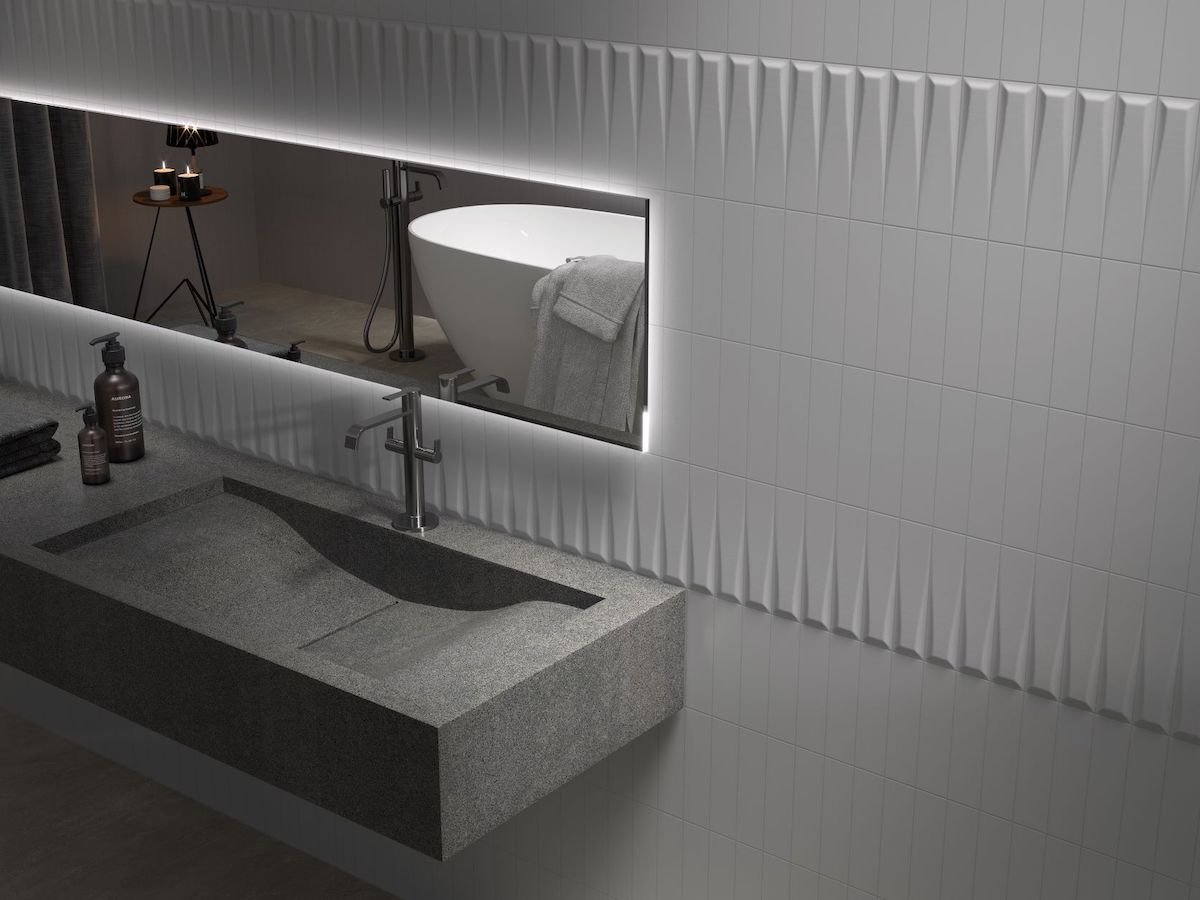
Image credit: CTD Architectural Tiles
Considering materials
A common consideration when it comes to choosing tiles is gloss versus matt – with each offering its own unique benefits to a project. Matt tiles not only have a reputation for being non-slip and requiring minimal cleaning, but they are also a popular choice for creating a rustic effect.
But while matt tiles are ideally suited to some projects, the right gloss tiles will interact well with lighting to alter the perception of the space. Light reflecting on the surface of gloss tiles can make the space appear wider, and therefore make the room feel larger than it is, making it the ideal choice for smaller areas of the hotel such as bathrooms. The interaction between gloss tiles and light can also make a room appear brighter – another benefit for areas of the hotel which receive little or no natural light.
Considering inclusivity
Not only is careful consideration of materials useful in creating a stunning design, but it’s also vital for creating inclusive spaces within hotels, particularly hotel bathrooms which, under the Equality Act 2010, must be accessible to those with complex needs.
One of the key ways to do this is to consider the Light Reflectance Values (LRVs) of the tiles in the design of a project – ultimately this is the amount of light reflected from objects, in this case tiles. LRVs measure the visual contrast between different elements of the space such as between the floors and walls, and it’s therefore vital to consider the LRVs of tiles when designing a hotel’s interior.
CTD Architectural Tiles is one of the brands that has taken advantage of our Black Friday package. To keep up to date with supplier news, click here.
Main image credit: CTD Architectural Tiles





